ARTICLE
Chamunda
There are several temples and shrines dedicated solely to Chamunda, with the sixteenth-century Chamunda Devi Temple in Kangra, Himachal Pradesh being a notable one. Others include the Kichakeswari Temple and the Baitala Deula in Odisha; the Chamundeshwari Temple in Mysuru; the Chamunda Temple at the Mehrangarh Fort in Jodhpur; and two temples in Chotila and Panera, Gujarat. She also appears as a minor goddess on wall murals in several temples in Nepal dated to the fourteenth and fifteenth centuries.
Illustrations of Chamunda appear in illustrated folios of the Devi Mahatmya, in Mughal manuscripts and in Pahari and Rajput paintings, as well as in paintings from Nepal. She is often depicted eating corpses in battlegrounds, carrying a severed head or drinking the blood of demons.
Bibliography
Dallapiccola, Ann. Dictionary of Hindu Lore and Legend. London: Thames & Hudson (2002).
Elgood, Heather. Hinduism and the Religious Arts. London, New York: Cassell (1999).
Harveen Bhandari, “Sacred Landscape: A documentation of the Chamunda Devi Temple Complex, Himachal Pradesh.” Compiling Records, Vol 10, Issue 1 (2013).
Rushal Unkule, Gopal Joge and Veena Mushrif‐Tripathy, “Early Medieval Representation of Human Anatomy: A Case Study of Chamunda Stone Image from Dharamsala, Odisha.” Heritage: Journal of Multidisciplinary Studies in Archaeology (2017).
The Metropolitan Museum of Art. “Chamunda, the Horrific Destroyer of Evil.” Accessed January 20, 2023. https://www.metmuseum.org/art/collection/search/38152.





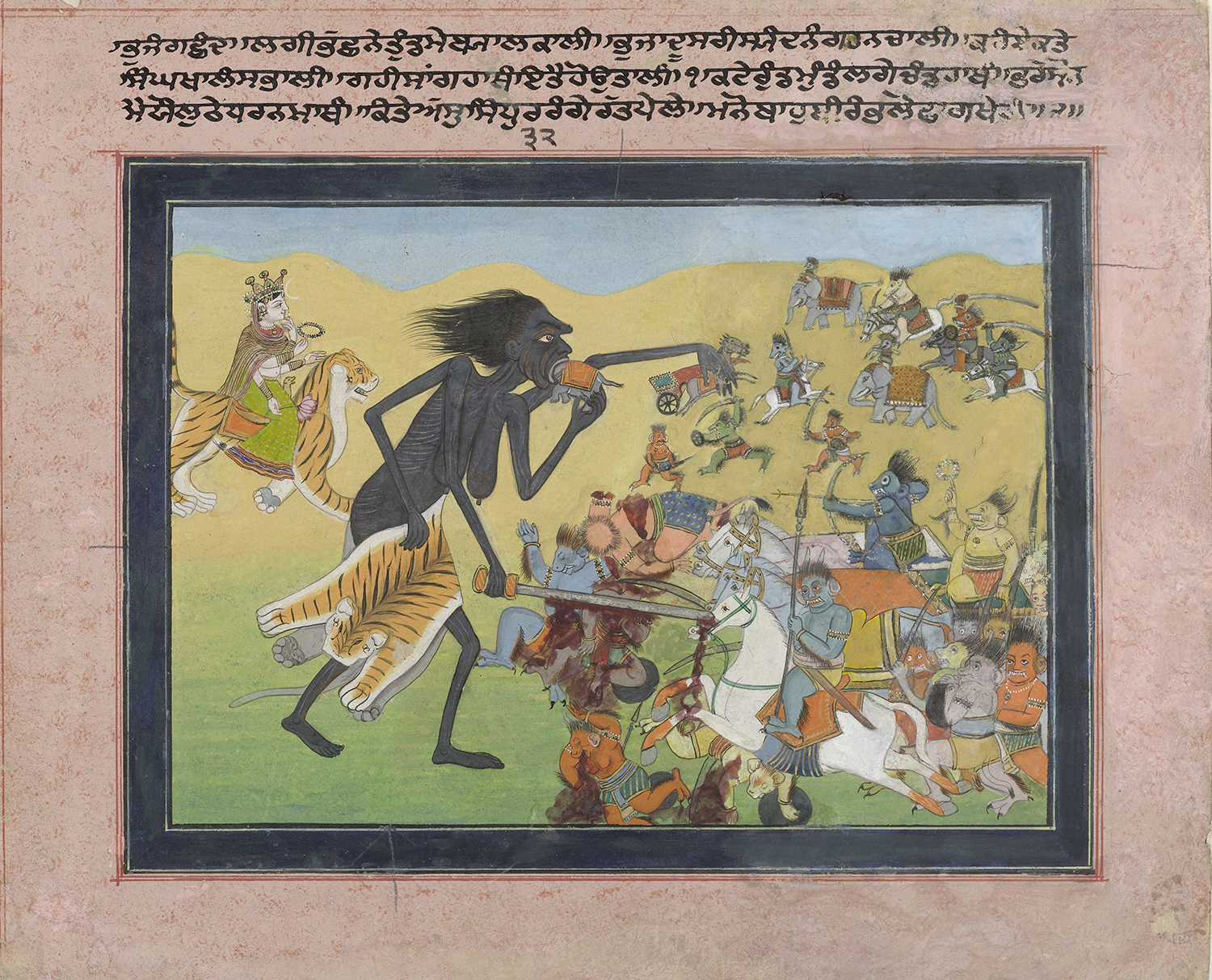
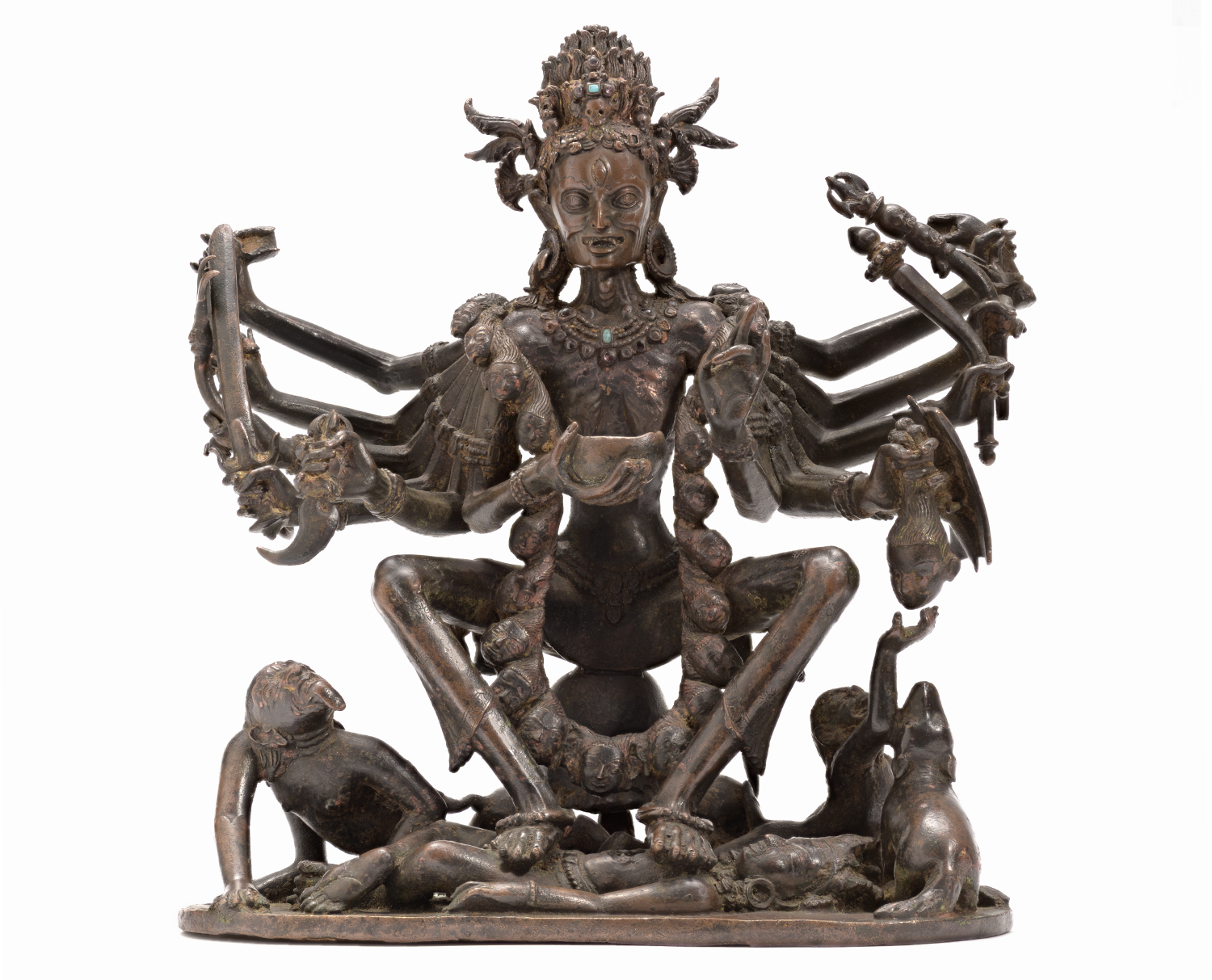
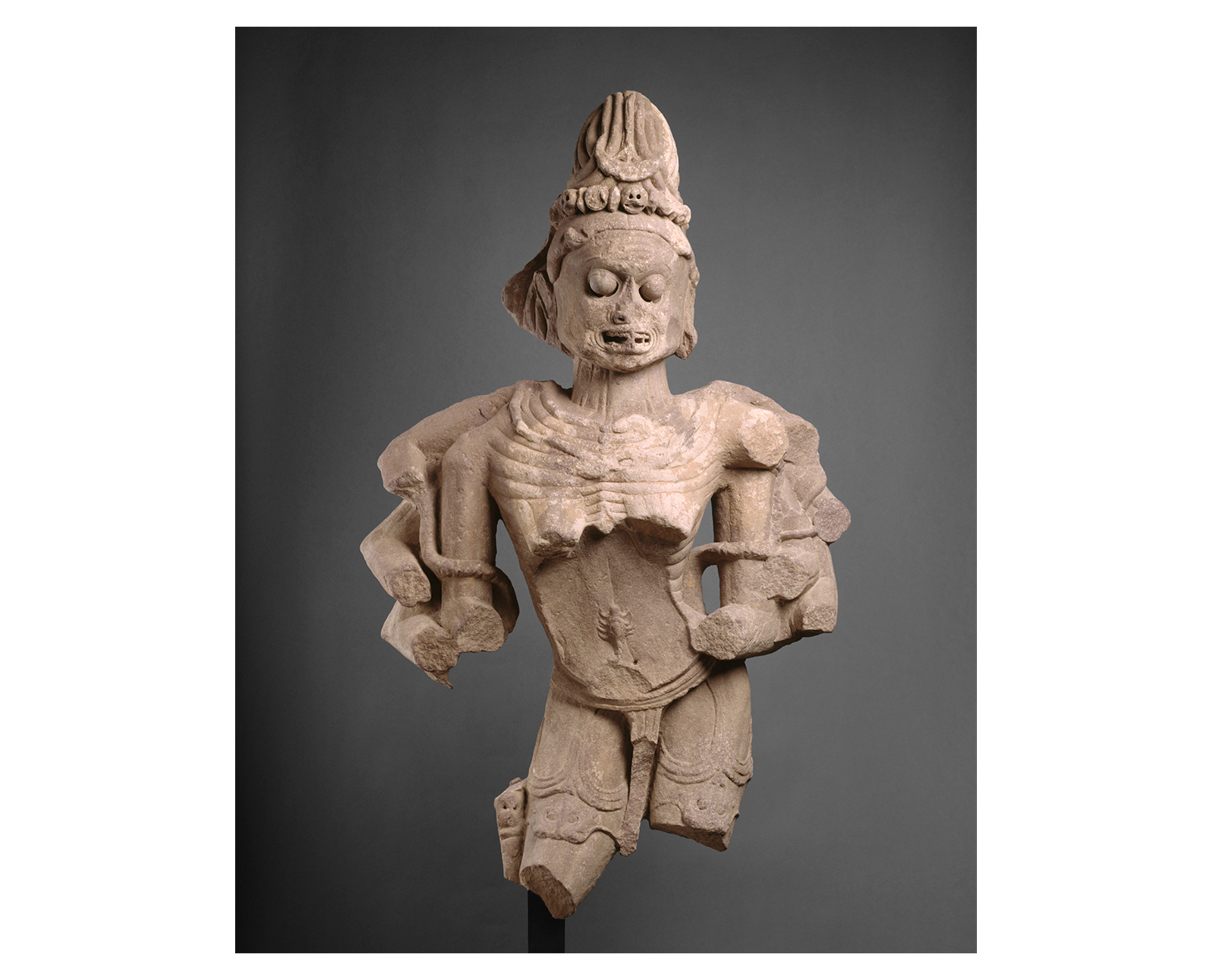
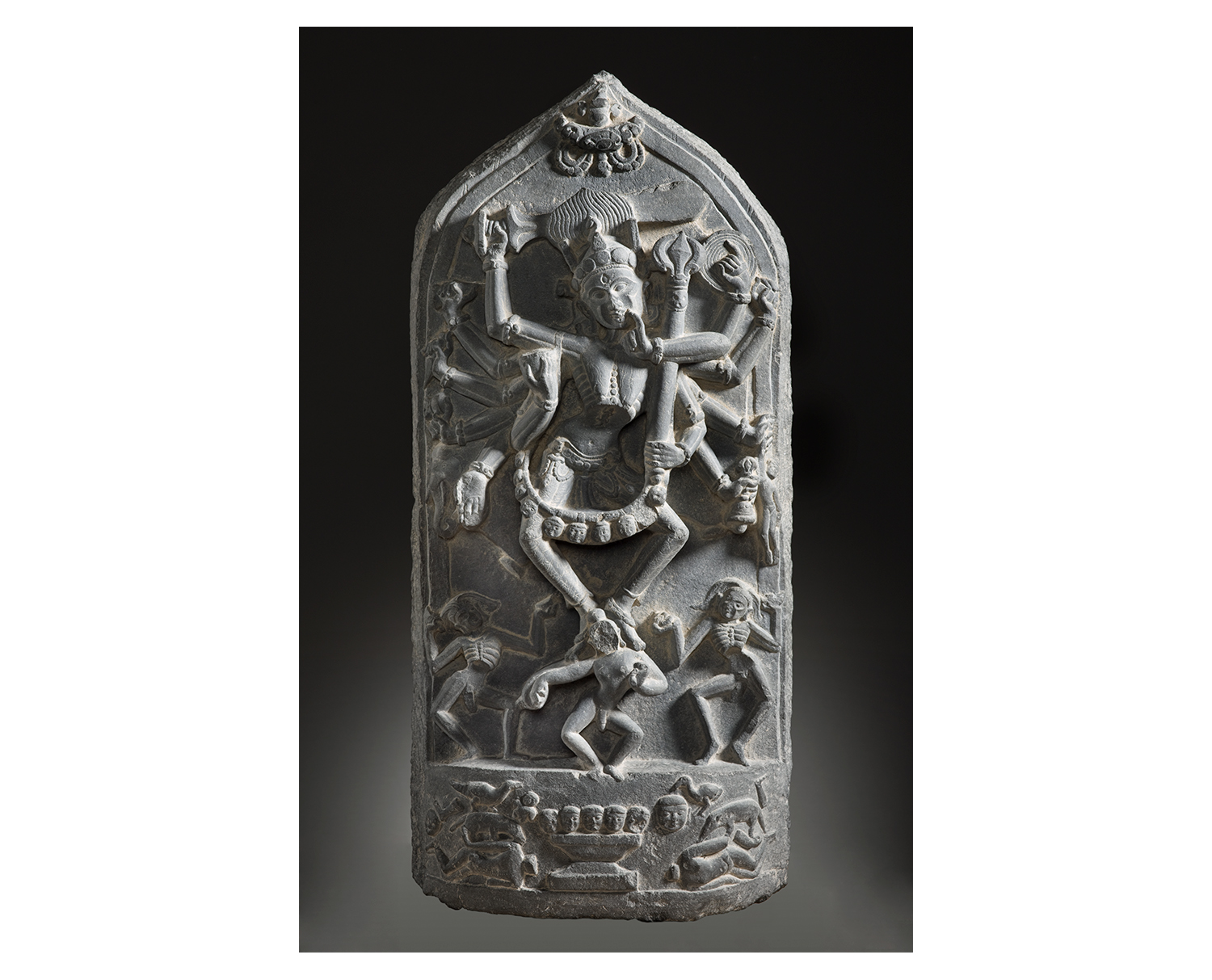
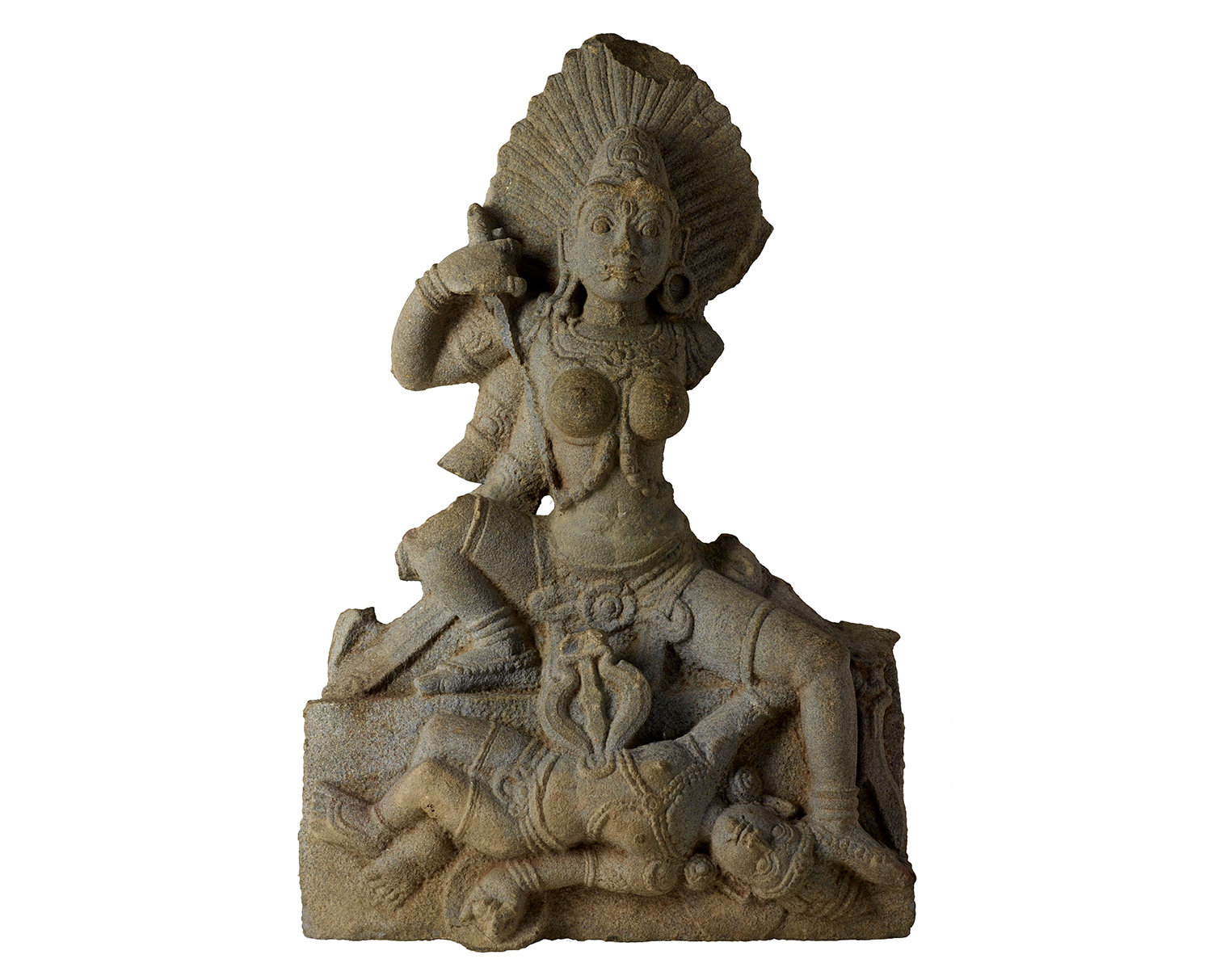

![The façade of the Maneckji Seth Agiary, a Zoroastrian fire temple, is a standout example of the popularity of the Persian Revival Style in Western India in the 19th and 20th centuries. This style was often seen in the architectural patronage of the Parsis, who emerged as one of the most influential mercantile communities of British India. Popular motifs of this style, like the mythical lamasus (winged bulls with human heads) and the faravahar (a winged guardian spirit in Zoroastrianism), drew on the historical art and architecture of the Achaemenid and Sasanian empires from sites like Persepolis, Bisotun, Taq-e Bostan, Naqsh-e Rostam and Naqsh-e Rajab in Persia.
The Parsi community’s adoption of this style occurred largely due to their networks of global commerce and politics, allowing them to access and translate research of ancient Persia into visible symbols that underlined their association with antiquity, imperial power, and art.
نمای آتشکدهی زرتشتی مانِکجی سِت نمونهی بارزی از رواج سبک «احیای [معماری] ایرانی» در غرب هند طی سدههای نوزدهم و بیستم است. این سبک غالباً در بناهایی دیده میشد که پارسیان، از بانفوذترین جوامع بازرگان در هند بریتانیا، بانیشان بودند. نقشمایههای محبوب این سبک، مانند گاو بالدار اساطیری (لاماسو) و فَروَهَر (روح بالدار نگهبان در دین زرتشت)، برگرفته از هنر و معماری شاهنشاهی هخامنشی و ساسانی، در جاهایی چون تخت جمشید و بیستون و طاق بستان و نقش رستم و نقش رجب، بود.
اقتباس جامعهی پارسیان از این سبک بسیار مرهون روابط گستردهی تجاری و سیاسی آنها بود که دسترس به پژوهشها دربارهی ایران باستان و برگردانیدن آنها به نمادهای بصری را ممکن میکرد و بر پیوند پارسیان با دوران باستان و قدرت شاهنشاهی و هنر تأکید میکرد.](https://mapacademy.io/wp-content/plugins/instagram-feed/img/placeholder.png)
